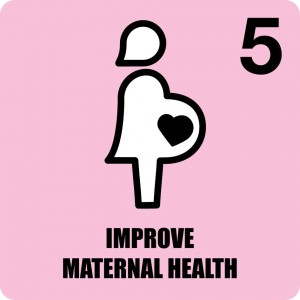May 5 is International Day of the Midwife, a globally recognized day to acknowledge the work of midwives around the world.
Midwives are an undervalued asset in many countries. But the truth is, midwives could be key to achieving Millennium Development Goals (MDGs) 4, 5, and 6, to reduce child mortality, improve maternal health, and  combat HIV/AIDS, malaria, and other disease. Many people, including those involved in governments and policy-making, tend to overlook the fact that midwifery grew out of a public need and social welfare.
combat HIV/AIDS, malaria, and other disease. Many people, including those involved in governments and policy-making, tend to overlook the fact that midwifery grew out of a public need and social welfare.
According to the International Confederation of Midwives (ICM), more than 340,000 women die of preventable maternal deaths each year, and according to the World Health Organization, in 2008 this number was 358,000 deaths. Many more must deal with preventable infections and disabilities.
Around the world, midwives play a valuable role in promoting maternal health and preventing needless maternal and newborn deaths. According to a UNFPA report titled “Towards MDG 5: Scaling up the Capacity of Midwives to Reduce Maternal Mortality and Morbidity,”professional midwives present a “low-technology, high-quality solution” to the problem of maternal mortality, common in many developing countries.
In the same report, UNFPA outlines the many skills a professional midwife can offer in reducing maternal mortality and morbidity. For example, before and during pregnancy, midwives can be a source of substantiated advice and information. They can be a source of family planning advice and materials. During pregnancy and labor, a trained midwife can recognize signs of problems in women and their newborns, and can refer a woman to the appropriate facility. When adequately trained, midwives can also provide emergency care. Through these skills, UNFPA believes that midwives can play a key role in achieving MDGs 4 (reduce child mortality), 5 (improve maternal health) and 6 (combat HIV/AIDS, malaria and other diseases). In some countries, midwives can also provide vaccination services.
Over the last few decades, several countries have harnessed the power of midwives as frontline maternal health workers. Malaysia presents a great case study of how legitimizing and promoting professional midwives has  lead to a decline in maternal mortality, Millennium Development Goal 5. Recognition of midwifery as a profession resulted in monitored training, evaluations, development of curriculums, and most importantly, led to the development of midwives as skilled birth attendants who could be available to attend women in labor. This also helped strengthen health systems by providing a referral method for women who were in need of more specialized care than a midwife might be able to provide. Midwives also are record-keepers of maternal mortalities and morbidities, which has increased the ability of local and federal governments to perform accurate surveillance.
lead to a decline in maternal mortality, Millennium Development Goal 5. Recognition of midwifery as a profession resulted in monitored training, evaluations, development of curriculums, and most importantly, led to the development of midwives as skilled birth attendants who could be available to attend women in labor. This also helped strengthen health systems by providing a referral method for women who were in need of more specialized care than a midwife might be able to provide. Midwives also are record-keepers of maternal mortalities and morbidities, which has increased the ability of local and federal governments to perform accurate surveillance.
Today, midwives exist as a cornerstone of maternal health in Malaysia, and a diverse group of other countries, including Rwanda, and Burundi. By recognizing midwives as a necessary component of public health and development, which included promotion of skilled birth attendants, Malaysia was able to reduce maternal mortality
In Sri Lanka, where maternal mortality rates also decreased among once-increasing midwifery, the Minister of Health acknowledged in 2005 that midwives were losing their popularity. He also explained the ramifications of this decline in popularity. For example, where midwives lost popularity, there were increased births taking place in central hospitals. This resulted in less specialized attention to high-risk deliveries, and increased dedication of limited resources, such as beds, medications, and other supplies, to normal births. In addition, lower regard for midwives was shown to increase staffing problems; midwives were less willing to show up to work, and preferred to move into nursing or other professions. The consequences can be severe, as shortages in adequately trained and available staff are less available can mean a rise in preventable deaths for mothers and newborns. Furthermore, the quality of trained midwives decreases because of a high dependency on anyone willing to work in the field. It also causes a steady stream of patients into high-volume clinics and primary care facilities.
Although midwives are not the only solution to poor maternal and newborn health outcomes, they are part of the larger solution: health systems strengthening. Investment in midwives, who are part of their communities and able to provide culturally relevant but accurate information is an invaluable resource for many women who would otherwise go without such quality care. Because qualified midwives are trained to understand infectious disease and issues in the scope of pre- and post-natal care, as well as delivery, they are important assets to countries seeking to improve the lives of women, children, and other vulnerable populations.
As Malaysia and other countries have demonstrated, effective midwifery requires governments to invest in supplies and equipment, support policies which are inclusive of midwives, partnerships to strengthen other areas of health systems.
Learn more about midwives on the ICM website.


